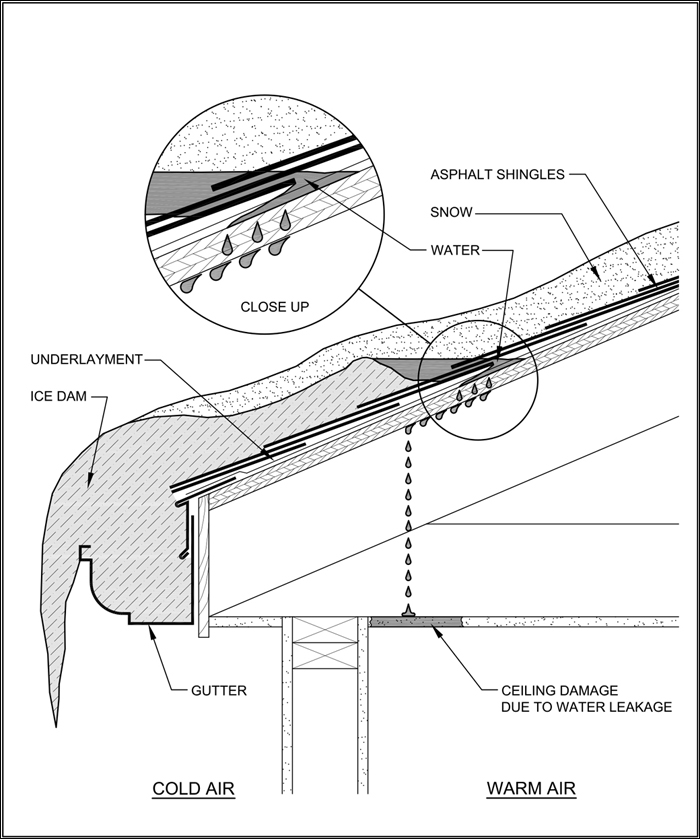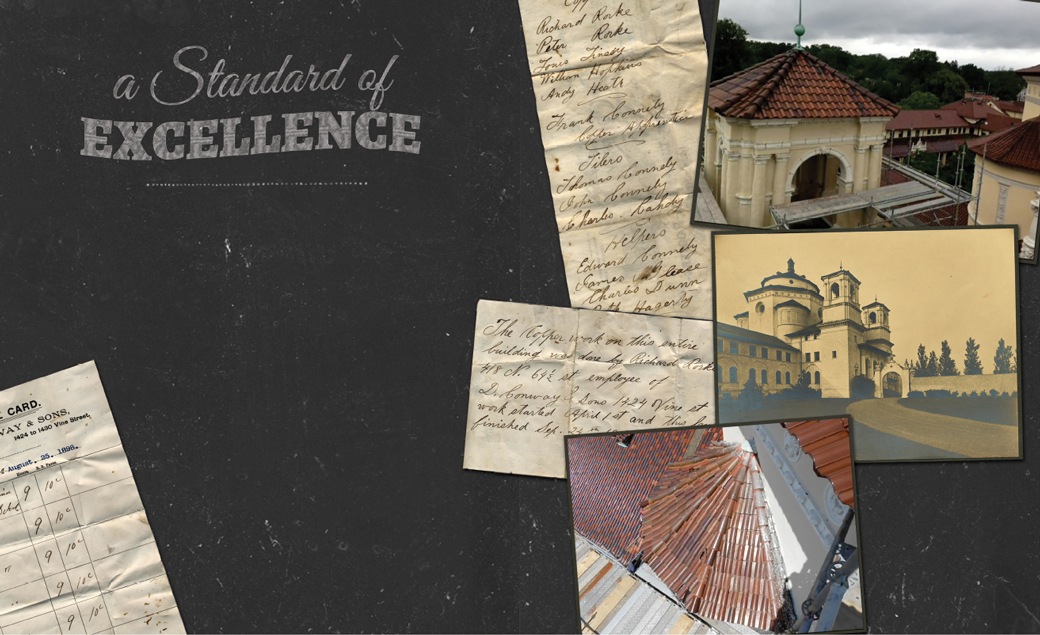Moisture infiltration resulting from ice damming can be a problematic occurrence with steep-slope, water-shedding roof systems. You should be aware of the cause of ice damming-related leakage, as well as code provisions and NRCA's recommendations for implementing design considerations to prevent such leakage.
Ice dam formation
Ice damming can be experienced during the winter months in the northern- and mixed-climate U.S. regions during periods of snow and ice accumulation and melting.

Illustration of ice damming on an asphalt shingle roof system
Ice dams form when accumulated snow melts from the warmer upper portions of steep-slope roofs and refreezes over the relatively colder lower portions of a roof. The resulting ice formations act like dams and cause melting snow to back up beneath the primary roof covering, likely leaking into the building's interior.
An illustration of ice damming is provided in the figure.
Code requirements
The International Building Code,® 2012 Edition (IBC 2012) requires the installation of an "ice barrier" within asphalt shingle, metal shingle, mineral-surfaced roll roofing, slate, and wood shake and shingle roof systems for buildings "… where there has been a history of ice forming along the eaves causing a backup of water. …"
The code stipulates the ice barrier shall consist of at least two layers of underlayment cemented together or a self-adhering polymer-modified bitumen sheet. The ice barrier shall extend from the eave edges to at least 24 inches inside a building's exterior wall line.
The code indicates an ice barrier is not required for detached buildings that contain no conditioned floor area (unheated utility buildings).
The International Residential Code,® 2012 Edition (IRC 2012) includes similar requirements to those in IBC 2012 except whether an ice barrier is required as indicated in IRC 2012's Table R301.2(1)—Climate and Geographic Design Criteria. When adopting IRC 2012, the adopting jurisdiction is intended to specifically indicate in the table whether an ice barrier is required.
NRCA's recommendations
NRCA recommends water and ice-dam protection membranes be used in locations where the average January temperature is 30 F or lower.
A water and ice-dam protection membrane preferably is a single-layer application of self-adhering polymer-modified bitumen sheet; NRCA recommends sheets complying with ASTM D1970, "Standard Specification for Self Adhering Polymer Modified Sheet Materials Used as Steep Slope Roofing Underlayment for Ice Dam Protection."
Furthermore, NRCA recommends an ice dam-protection membrane be applied starting at the eaves and extending upslope to a point 24 inches—measured in the horizontal plane—from the inside of a building's exterior wall line.
Additional information regarding ice damming, preventing ice dam-related leakage and a U.S. map indicating where the average January mean temperature is below 30 F is provided in The NRCA Roofing Manual: Steep-slope Roof Systems—2013.
Mark S. Graham is NRCA's associate executive director of technical services.



